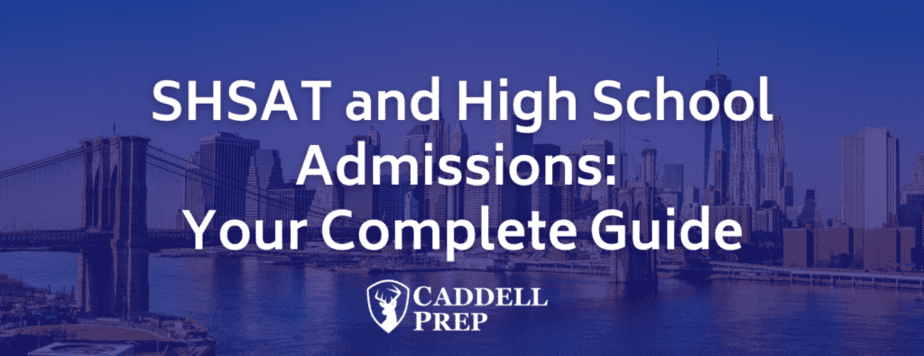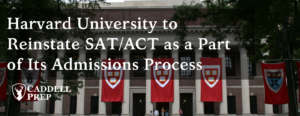For many students in New York City, their academic opportunities are largely determined by their performance on the Specialized High Schools Admissions Test (SHSAT). This standardized exam is used to determine admission to the city’s eight specialized high schools, which are widely regarded as some of the best public schools in the country. However, the use of the SHSAT as the sole admissions criteria has been the subject of much debate and controversy in recent years.
Supporters of the SHSAT argue that it is a fair and objective way to determine admission to these elite schools, and that it ensures that only the most academically talented students are admitted. However, critics argue that the test is biased in favor of students from wealthier backgrounds who can afford expensive test preparation programs, and that it perpetuates racial and socioeconomic inequality in the city’s public schools.
As the debate over the SHSAT continues, it is important to consider the impact that this test has on students’ academic opportunities. For those who do well on the exam, admission to a specialized high school can open doors to some of the best colleges and universities in the country, as well as lucrative careers in fields such as medicine, law, and engineering. However, for those who do not perform well on the exam, their options may be more limited, and they may be relegated to attending a less prestigious high school with fewer resources and opportunities.
What is SHSAT?
The Specialized High School Admissions Test (SHSAT) is a standardized test used by the New York City Department of Education to determine admission to the city’s specialized high schools. The test is administered to eighth and ninth-grade students who are seeking admission to one of the nine specialized high schools in the city.
The SHSAT is a timed test that assesses students’ proficiency in both math and English language arts (ELA). The test is divided into two sections: the ELA section and the math section. The ELA section consists of reading comprehension and revising/editing questions, while the math section includes algebra, geometry, and arithmetic questions.
The SHSAT is the sole criterion for admissions to eight of the nine specialized high schools in New York City. The only exception is the Fiorello H. LaGuardia High School of Music & Art and Performing Arts, which requires an audition or portfolio for admission.
The Importance of SHSAT Scores
The Specialized High School Admissions Test (SHSAT) is a critical component in determining admission to specialized high schools in New York City. The test is designed to assess students’ academic abilities and potential, and it has a significant impact on their academic opportunities.
Academic Opportunities
Students who perform well on the SHSAT have access to some of the best high schools in the city, which offer rigorous academic programs and a range of extracurricular activities. These schools provide students with an opportunity to challenge themselves academically and prepare for college and beyond.
Furthermore, these schools offer students a chance to interact with peers who share their academic interests and abilities. This can be particularly beneficial for students who might feel isolated or unchallenged in a traditional school setting.
College Acceptance Rates
Students who attend specialized high schools in New York City tend to have higher college acceptance rates than their peers in traditional public schools. According to a study by the New York City Department of Education, students who attend specialized high schools are more likely to enroll in selective colleges and universities than students who attend other public schools in the city.
Furthermore, students who attend these schools tend to perform better on standardized tests like the SAT and ACT, which are critical components in the college admissions process. This can give them a significant advantage when applying to colleges and universities.
Overall, the importance of SHSAT scores cannot be overstated. They have a significant impact on students’ academic opportunities and future success. Students who perform well on the SHSAT have access to some of the best high schools in the city and are more likely to succeed academically and in college.
The Controversy Surrounding SHSAT
Diversity and Inclusivity
The Specialized High School Admissions Test (SHSAT) has been at the center of controversy for years due to its impact on diversity and inclusivity in New York City’s elite public high schools. Critics argue that the SHSAT is a barrier for low-income and minority students who may not have access to quality test preparation resources. As a result, the student body in these schools is largely composed of Asian and white students, while black and Hispanic students are underrepresented. According to a report by The Atlantic, “in 2017, Black and Hispanic students made up 68 percent of New York City’s public-school population, but only 10 percent of students admitted to the specialized high schools.” This has led to calls for reforming the admissions process to increase diversity and inclusivity in these schools.
More to the Story
Looking at the current racial breakdown of the specialized high schools doesn’t tell the whole story. In the 1980s, Brooklyn Technical High School was predominantly black and Hispanic. The drop in black and Hispanic students correlates with the removal of gifted and talented programs from middle schools that predominantly served black and Hispanic students. It can be inferred that reducing the quality of education at the junior high school level resulted in less black and Hispanic students qualifying for the Specialized High Schools.
Standardized Testing Criticisms
Another criticism of the SHSAT is that it is a single-test measure that does not take into account a student’s overall academic performance or potential. The test is also criticized for its emphasis on math and English, which may not accurately reflect a student’s abilities in other subjects. Critics argue that standardized tests like the SHSAT perpetuate a culture of test-taking and put too much emphasis on test scores rather than other factors such as extracurricular activities, community involvement, and leadership potential. They also argue that these tests put undue pressure on students and may not accurately predict success in high school or beyond. Despite these criticisms, supporters of the SHSAT argue that it is a fair and objective measure of a student’s abilities and potential. They also argue that it provides a level playing field for all students, regardless of their background or socioeconomic status. Overall, the controversy surrounding the SHSAT highlights the ongoing debate over the role of standardized testing in education and the need for a more inclusive and diverse educational system.
Alternatives to SHSAT
The Discovery Program
The Discovery Program is an alternative pathway to the specialized high schools for students who come from low-income families or attend low-performing schools. The program provides academic preparation and support to students who might not have access to the same resources as their peers. Students who participate in the Discovery Program and meet certain criteria are offered admission to a specialized high school.
The program has been successful in increasing diversity at the specialized high schools. According to a report by the New York City Department of Education, “the percentage of Black and Hispanic students admitted to the specialized high schools through Discovery increased from 9 percent in 2013 to 18 percent in 2019.
Holistic Admissions
Another alternative to the SHSAT is holistic admissions, which takes into account a student’s academic record, extracurricular activities, personal essays, and other factors. Holistic admissions is used by many colleges and universities to evaluate applicants, and some specialized high schools in New York City have also adopted this approach.
Proponents of holistic admissions argue that it allows for a more comprehensive evaluation of a student’s potential and achievements. However, critics argue that it can be subjective and prone to bias, and that it may not be as effective in identifying students with high academic potential.
A school such as Staten Island Technical HS tells a different tale of a holistic approach. Staten Island Tech was a screened school that used a holistic approach. It did not become a Specialized High School until 2005, at which point it adopted the SHSAT as the sole criteria for admission.
Prior to 2005, the school was more than 80% white. After adopting the SHSAT, the population of white students as a percent of students has trended downward to the low 60s. It can be inferred that a holistic approach may actually result in even less diversity.




